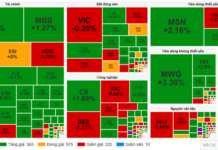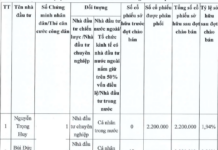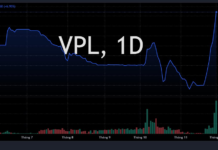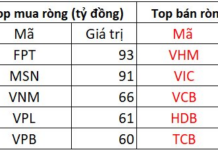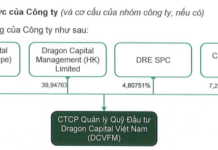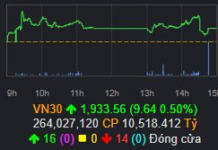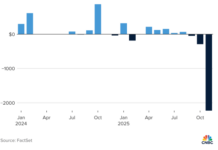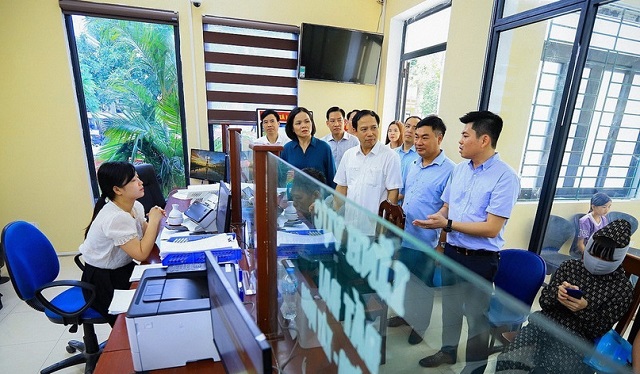
|
Inspecting operations at a public administrative service center. (Photo: Trong Dat/VNA)
|
In its efforts to realize the aspiration of becoming a high-income country by 2045, Vietnam is vigorously promoting institutional reform, a campaign considered as “rearranging the country.”
Mr. Shantanu Chakraborty, ADB Country Director for Vietnam, considers this one of the most necessary steps to overcome the existing “middle-income trap.”
However, ADB also emphasizes that “reform is like a marathon, not a sprint,” requiring a strategic vision, close coordination, and persistent investment in implementation capacity to successfully reach the finish line.
“Boost” for National Competitiveness
After nearly four decades of renovation with remarkable achievements recognized worldwide, Vietnam has successfully escaped the group of low-income countries to join the ranks of middle-income nations.
This is a historic feat, but it is also the starting point for a new, more complex, and challenging development journey. The growth model relying on capital and cheap labor has reached its limit.
The economy is facing structural challenges inherent in the “middle-income trap”: investment efficiency tends to decrease, productivity growth remains low, and the position in the global value chain is mainly in the processing and assembly stages with limited added value.
In this context, the comprehensive institutional reform being carried out by Vietnam is considered by ADB as a bold and highly necessary move.
According to ADB’s analysis, if implemented vigorously and effectively, this institutional reform will have far-reaching impacts, creating a “boost” to enhance Vietnam’s economic competitiveness in the medium and long term.
The most direct and obvious impact is the improvement of the business environment. ADB analyzes that simplifying administrative procedures in areas considered major obstacles for businesses, such as licensing, land, and project approval, will create a dual effect: reducing delays and unblocking public investment capital while reducing costs and increasing predictability for the private sector. This will establish a more level playing field and transparency, enhancing investment efficiency and creating a new competitive edge for Vietnamese enterprises in both the domestic and international markets.

|
Export garment factory. (Photo: Tran Viet/VNA)
|
ADB argues that the business environment should also be compatible with international standards. This will not only help Vietnam become an attractive destination for foreign strategic investors but also prepare domestic enterprises to “venture into the high seas.”
A dynamic public administration with the capability to respond quickly to economic changes will be a solid foundation to facilitate timely removal of bottlenecks in production and support the business community to take advantage of opportunities from new-generation free trade agreements such as the Comprehensive and Progressive Agreement for Trans-Pacific Partnership (CPTPP) and the Regional Comprehensive Economic Partnership (RCEP).
Furthermore, the reform will promote productivity and more efficient allocation of social resources. A streamlined and effective public administration will help cut unnecessary operating costs while reducing compliance burdens for both the state and businesses.
According to ADB, this will allow the government to strategically focus resources on essential infrastructure, high-quality healthcare, and education – considered the foundations for long-term development. Simultaneously, with barriers removed, the private sector can optimize investment profits and boldly shift capital to production and business activities with higher productivity and added value. This efficient resource allocation, from both the state and the market, is the key to breaking free from the limitations of the old growth model and creating a stronger momentum for the entire economy.
Finally, beyond pure economic benefits, institutional reform carries a deeper meaning: enhancing the country’s sustainability and resilience. ADB emphasizes that a stronger public sector after the reform will effectively perform its role in state management. In this context, the public sector’s role will be elevated, becoming an efficient “helmsman” to balance growth and development objectives. This balance entails promoting healthy market competition while protecting the environment and ensuring social welfare.
In other words, a robust institutional system is a tool to address the negative aspects of the market economy, reduce inequality, and bring the country closer to the Sustainable Development Goals (SDGs) in a more substantive way.
Three Pillars to Reach the Finish Line
With its international experience, ADB asserts that implementing large-scale reforms that impact the entire social structure is always a complex task, a journey that is never smooth. This process will undoubtedly encounter transitional challenges, requiring thorough preparation and synchronized solutions. These challenges may include temporary disruptions in public services and governance, disturbances for certain groups and communities, or new requirements for the capacity of officials and civil servants.
Based on its extensive experience in supporting institutional and structural reforms across the Asia-Pacific region, ADB has identified three critical factors, considered the three pillars for Vietnam to successfully navigate this reform “marathon.”
The first and most important pillar is a strong commitment and ensuring continuity in the strategy. Successful reform always demands a unified vision and a clear, consistent commitment from high-level leaders over an extended period.
The reform vision must be aligned and firmly anchored to national development strategies (such as the Socio-Economic Development Strategy, the Socio-Economic Development Plan), creating synergy and harmonized efforts among ministries, sectors, localities, and the people. ADB emphasizes the importance of balancing short-term gains and long-term sustainability.
ADB Country Director for Vietnam, Mr. Chakraborty, has compared: “Reform is like a marathon, not a sprint.” This comparison holds a profound meaning: reform requires strategic endurance, perseverance in pursuing long-term goals, and avoiding short-term, sporadic decisions.

|
Training high-quality human resources to meet the era of innovation, creativity, and growth model transformation. (Photo: Chi Tuong/VNA)
|
The second pillar is building and developing a professional workforce. ADB emphasizes that institutional reform cannot succeed without capable people to implement it. Effective implementation of complex policies and regulations in the new context requires a corps of officials and civil servants with high technical expertise and competence to create and sustain the impacts of reform. Therefore, the government needs to focus on strengthening technical capacity in all fields, investing heavily in training and fostering, and promoting the application of digital technology to improve governance while ensuring cybersecurity.
The third pillar is a mechanism for effective monitoring, evaluation, and adaptive flexibility. Reform is a dynamic process of learning and adjusting along the way. ADB states that reform efforts will go through a cycle of “building reform measures – implementing to create economic and social impacts – reviewing and perfecting the next set of reform measures.”
Therefore, integrating a robust monitoring and evaluation system into the reform program is crucial. This system enables policymakers to track progress, measure impacts objectively, learn from experience, and quickly identify emerging issues to adjust policies accordingly. ADB refers to this as “adaptive governance” – a key to successfully navigating complex reforms.
In conclusion, from the perspective of a long-term and trusted development partner, ADB affirms that the institutional reform Vietnam is pursuing is a correct and pivotal step. It holds the key to unlocking a new phase of qualitative development, overcoming mid-term challenges, and realizing ambitious long-term goals. The journey ahead is fraught with challenges, but with a strategic vision, close coordination, and enhanced implementation capacity, Vietnam is well-positioned to reap success from this historic “marathon.”
Khanh Ly
– 19:45 08/29/2025
“Prime Minister Directs Exploration of a Private Sector Development Fund and the Creation of a Business Environment Index”
“During a meeting with the Private Economic Development Research Board, Prime Minister Pham Minh Chinh urged the swift establishment of a Private Economic Development Fund and the creation of an evaluation index for the implementation of Resolution 68-NQ/TW. These initiatives are designed to boost the private sector’s role as a vital driver of economic growth.”
All Set to Soar!
At the dawn of a new Spring, Tien Phong reporters had the honor of discussing with leading experts and National Assembly delegates regarding the strategic orientations of General Secretary To Lam. The focus of these conversations revolved around a new era – an era of Vietnam’s great leap forward as a nation.
“Investors Demand a Transparent Business Environment and Stable Policies”
Enhancing the business environment entails a multitude of factors. Beyond mere administrative reforms, investors seek stable, holistic, and cohesive policies that provide a solid foundation for their ventures.
Unlocking Institutional Bottlenecks: Navigating the Complexities for a Smoother Journey Ahead
Speaking at the 8th session of the 15th National Assembly on October 21, 2024, General Secretary To Lam expressed the view that institutional bottlenecks are the main hindrance to progress. He emphasized that addressing these institutional bottlenecks, starting with improvements in law-making, is an urgent task for the National Assembly.


